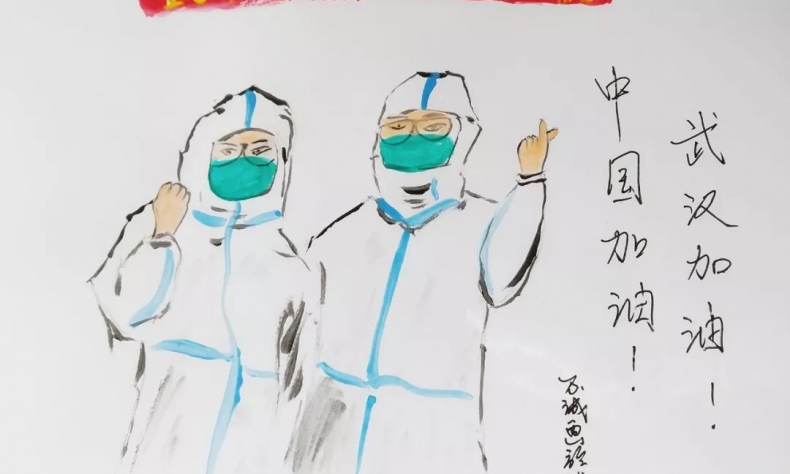Short-Term Impact

China’s economy will remain strong despite the epidemic outbreak.
As the outbreak of the novel coronavirus pneumonia is brought under control, China’s economic activity will recover to normal levels, notwithstanding that it has been severely affected in the short run, especially after the World Health Organization (WHO) declared it a public health emergency of international concern on January 31.
In the meantime, against the current cyclical fluctuation and economic downturn, China should intensify counter-cyclical adjustments, and use a basket of macro-economic control tools in a timely manner to iron out economic cycles and ensure stable economic growth.
Based on current figures, the virus has a lower fatality rate than the severe acute respiratory syndrome (SARS) outbreak in 2003, but has a longer incubation period and stronger transmissibility. The good news is that the country’s medical resources are being concentrated in the epidemic-affected area, and most patients are stable after getting prompt treatment.
The length of the current epidemic depends on whether the arrival of medical resources can outpace the transmission of the virus, whether virus variation will occur and when targeted treatment plans will be worked out. Experts estimate that the epidemic will likely last for some time.
However, the market doesn’t need to be excessively fearful as irrational behavior in the short run will only make the economic situation worse. What the market urgently needs are rational economic expectations and the reasonable allocation of resources.
Back in 2003 when SARS broke out, many economists were concerned that the epidemic would trigger another Asian financial crisis. But the fact was that from November 2002 when the virus was first found to July 2003 when the WHO declared no newly reported confirmed or suspected cases, its influence on the Chinese economy was mainly in the second quarter of 2003, while the country’s GDP growth for 2003 was only mildly affected.
China’s GDP growth rate dropped to 10.1 percent in the second quarter of 2003 from 11.1 percent, with tertiary sectors such as transportation and leisure services more seriously affected than manufacturing and agriculture. For instance, passenger flow of railway, road and aviation transportation experienced year-on-year decreases for three consecutive quarters that year, while sectors such as accommodations, tourism and tourist spots also saw significant drops. In addition, consumption was also seriously affected. Year-on-year growth of retail sales of consumer goods started slowing down during the first quarter of the year, declining from 10 percent to the lowest point of 4.3 percent in May. However, such influences didn’t last long, and various indices soon recovered after the epidemic came to an end.
In addition to the huge costs to control the epidemic, its biggest impact on the economy so far is the direct and indirect influences of restricting the flow of people. This may include a decline in resident consumption, a reduction of corporate production and investment, a decrease in imports and exports, and higher inflation, unemployment and other major economic indices.
To curb the spread of the virus, local governments at various levels have adopted traffic control and advised residents to stay home. During the annual Spring Festival holiday, which is traditionally an economic high point, the tourism, hotel, catering, retail and entertainment industries had to suspend business. Due to the sharp decline in demand, the service industry’s hope of having a good start after the Spring Festival have also been dashed.
Many local governments have postponed the restart of work, which will inevitably affect normal corporate production and investment, and may lead to risks of defaults on orders and decreasing profits. If the epidemic spreads further, exports and foreign direct investment will also be affected. For the safety of their own nationals, foreign businesses may choose to limit imports from or delay visits to China, which will have a significant influence on the country as it actively builds an open economy.
Due to these influences, inflation and unemployment rates will rise in the short run, and GDP growth will slow down for a certain period. The government will most likely relax monetary and credit policies, increase fiscal expenditure and implement other measures to readjust the aggregate demand management to avoid the possibility of further economic downturn. Ensuring stable total demand and loosening risks should be well balanced to forestall systemic risks, with the market playing an important role in restoring the economy.
The impact of a large-scale setback on the economy in any country is seemingly a challenge to short-term demand, but it is actually a test of whether the country has a reasonable economic structure. Since China started to advance supply-side structural reform in 2015, the government has put forth a number of major reforms to address structural problems in the economy, such as eliminating outdated production capacity, promoting the development of advanced manufacturing and strategic emerging industries, and shifting from a factor-driven to an innovation-driven pattern. At the same time, new growth drivers should be established to seek growth through reform, transformation and innovation instead of relying on the traditional troika of consumption, investment and trade.
In conclusion, although we have no demographic dividend, powerful external demand or low leverage environment in government departments like we did in 2003, we should still be confident in the current economic structure and believe that China will be able to manage this setback.
The author is acting dean of the Digital Economy Institute at Zhongnan University of Economics and Law
 Facebook
Facebook
 Twitter
Twitter
 Linkedin
Linkedin
 Google +
Google +










